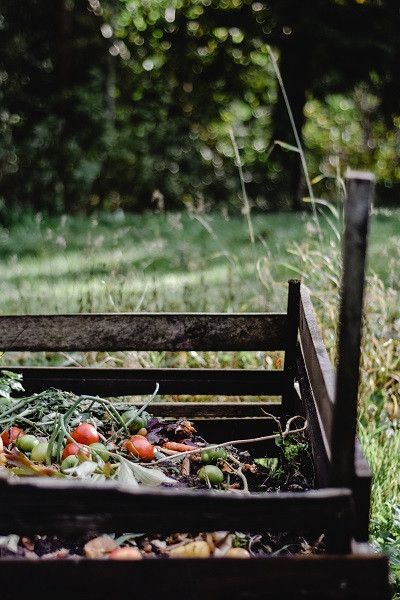
How to Build a Compost Bin
11th Mar 2021
It would be hard to have reached the year 2021 and not heard the word compost. However, if by chance you have actually been living under a toadstool, which by the way sounds like a great place to live, then let us break it down for you, pun definitely intended!

So what is compost and how does it add to our goal of sustainability and that of a circular economy? Composting is mother nature’s way of recycling. It is the controlled decomposition of organic material such as leaves, twigs, grass clippings, and vegetable food waste.
Compost is the valuable soil product that results from proper composting. Composting helps to keep the high volume of organic material out of our landfills and turns that material into a useful product. With organics making up a significant part of our municipal waste, onsite composting reduces the cost of hauling garbage and operating landfills. Compost is great for gardens and landscaping, and you can save money by buying less soil conditioner, mulch and fertilizer.
Composting has many other amazing benefits including reducing greenhouse gas emissions as well as increasing the ability for soil to absorb water so we conserve more and most importantly it puts nutrients back into the soil to grow more food.
But how can we set up a composting process for our home or business? We are glad you asked because we are going to step you through an easy, at home container setup and also tell you about a fantastic compost service that we offer for business operators.
Home Compost Setup
What you will need:
- Plastic storage bin with a lid
- Drill
- Shredded paper and dried leaves
- Soil
- Food scraps
- Worms (optional)
Step 1:
With oxygen being a vital ingredient for breaking down food scraps, the first thing you want to do is create some airflow. So using your drill, drill some evenly spaced holes (about 20) in the bottom of your bin as well as your lid. This will also allow for good drainage.
Step 2:
Now it’s time to layer. First layer is our carbon layer so using your dried leaves and/or shredded paper, add a 5cm layer to the bottom of your plastic container.
Step 3:
Now it’s time to add the soil, whatever you have available to you is fine. About a 5cm layer will do.
Step 4:
It’s green layer time! Add your food scraps and compostables! Remember, there are things that aren’t great for compost bins, just because they attract pests so keeping it to raw fruit and veg scraps is a good idea. You can see the kinds of things you can and can’t compost here.
Step 5:
Add another layer of soil and If you are using worms, now is the time to add them. Worms will make the whole process of composting speed up however do ensure that your compost bin is kept in a cool place to keep the worms comfortable. It is also time to add some water to your compost as well.
Step 6:
Maintain that compost baby by keeping a good mixture of food scraps and paper, a half and half ratio would be best. You will also want to keep your compost moist and give it a good mix to combine everything together.
Eventually you will be left with a gorgeous nutrient rich soil which is like fairy dust for your plants and garden.

Composting for Business
What about composting for business? Businesses are quickly realising they have a degree of responsibility to be greener and to operate in a more sustainable manner. And that is where Planet Friendly Packaging can help! With our business compost service to get you diverting all of your food and BioPak packaging waste from landfill. It’s as easy as 1, 2, 3 and we all love easy!
1: Buy compostable packaging. 2: Use green bins and 3: We collect it and turn it into compost. Check out the video below and head over to our website to join the Compost Club today!
Read the five keys to a circular business and composting to achieve a circular economy, on our blog.
Planet Friendly Packaging acknowledges the traditional custodians of the land on which we work. Our thoughts go out to everyone affected by COVID-19. Stay safe.

